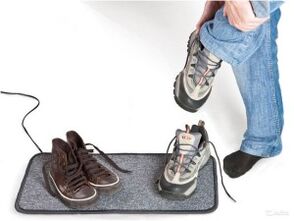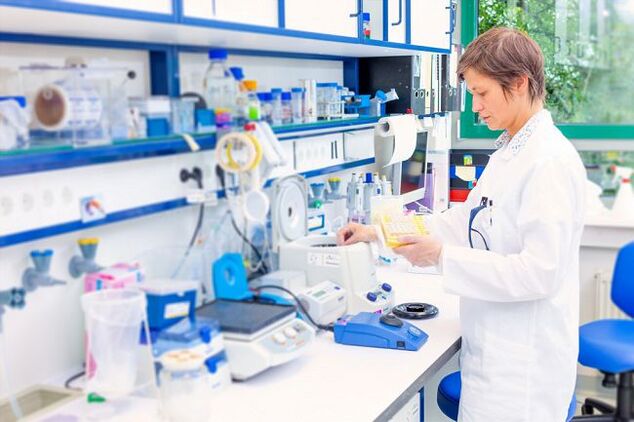Not everyone knows what the fungus looks like.In this regard, not every sick person understands when he sees a doctor.If you notice signs of nail fungus, you should also determine which stage the disease is, and then contact a specialist immediately.
Symptoms of the disease
The first symptoms of the fungus in the legs or hands are usually not as obvious.Most often this is a small nail lesion.The lateral edges of the plate, as well as the free edge, begin to gain a yellow color.The presence of the disease can also be recognized due to the lack of nail transparency at the base.
Sometimes you can see a gap between the record and the bed itself.The reasons for its formation are the accumulation of fungal pathogens, as well as a number of other germs.These types of lesions are called distal-lateral fungal shape.

Further, the fungus of the hands or feet are filled by hyperkeratosis located under the nails.This name means the phenomenon when the nail begins to react to the presence of a fungus by keratinizing the bed itself.The deeper the fungus into the plate, the more nails or nails of the legs thicken.
The last stage of this form is the loss of the entire nail as a whole.Also, the matrix begins to get involved in the process - this is where the nail starts to grow.Lamellar dystrophy occurs.
Further, the fungal symptoms intensify.Nail damage begins with small white spots.Over time, the types of these points become more diverse and broad.Moreover, such symptoms can be recognized due to loose and rough nail plate.Is easily exposed by scrap.However, this form is not found in the hands.Is important for the first finger.
Symptoms of the other form of infection - subungual proximal - are pillow lesions, which becomes red.After that, the tissues around the nails and nails begin to swell and shine, after which the shape changes.The result will be the separation of the cuticle from the plate.
Person is afraid to detect a fungus in itself because it is dangerous because the next stage is degenerative changes in the nail plate.The first symptoms of this form are inequality.They are easy to recognize;They resemble unequal grooves across the nail.If the disease is completely neglected, you may completely lose a nail on the hands or feet.
The most dangerous fungi are in total dystrophic form.This is the most advanced disease.The nail (if stored) appears gray as well as obesity.The main symptom is complete or partial destruction of the plate.
We are fighting for deceit

Before you start treating the fungus on your hands and feet, you should minimize the negative impact from the outside.It is advisable to find the reasons why the fungus of the hands or legs appeared and eliminate them.Most often there are four reasons:
- Frequent exposure to warm and humid environments.The pointing is that it is necessary to dry the shoes, especially during the demi-season period, when they are constantly wet.Trips and socks should only be selected from natural materials that will not create problems with heat and air exchange.
- Often the causes of the fungus of the hands and feet lie in poor immunity.It is enough to walk barefoot on the floor for the infection to stick to you.
- Frequent nail extensions are also among the most common causes of onycomycosis.It is advisable not to repeat the procedure more than once every six months.
- Analysis analysis will show that the most contagious fungi are active spores.They can penetrate the cavities between the fingers and the fingers, remaining sleeping, and then begin to grow significantly.This type of fungus is found in public places.
Even if you notice the first symptoms of the fungus, which are described above, you should not start self-medication.You should go to a specialist who will get an analysis.Most often, a scrap test is performed to check the nails and nails for the presence of fungi.This analysis is carried out in an alkaline environment, where the presence of mycelium is controlled under a microscope.
Only after the test shows a positive result can treatment begin.The fact is that the first signs of mushrooms in the hands and feet may not be mushrooms at all and may have completely different causes.For example, problems with the internal organs are negatively reflected in the nail plates.Then a wider analysis will be required, most often including a biochemical blood test.

To determine the causes of the fungus, doctors recommend analyzing the etiology of microorganism.This analysis is performed within three weeks, during which the relevant culture grows.Although there are now modern techniques that make it possible to analyze fungal DNA to determine the cause of its formation.
Frequent species
Among all the fungus of the hands and feet, there are three most popular types.The first of them is epidermofytosis.We are talking about a fungal disease that affects not only the nails and nails of the feet but also the skin around them.Most often you can find this type of fungus in a bath or fitness.
How is nails transmitted, you ask?Everything is quite prosaic.These are general hygiene products, linen, oil clothes, mattresses and other sports equipment and even thermometers.Most often, this type of fungus occurs at men's feet.It seems less often in the hands due to the lack of excessive sweating.
Trichophytosis of the feet is also very common.This is due to the fact that the disease has a high infectious level.It is also transmitted through objects used by a patient, including sports equipment.Extremely is extremely rare for children to be affected by these types of fungi.
Most often, young people are at risk, but the percentage is even higher among the adult population.Often this disease can be found in miners or workers in hot -type workshops.In Europe, this disease is often given the "title" of the "athlete's foot".This type of fungus does not occur in the hands.
The third most common variant is candidiasis.It is also found on foot;Usually does not reach his hands.Most of this type of fungus are pathogenic condition, therefore, they are present in every person without causing illness.However, with reduced immunity, their pathogenicity can be observed.In addition, they can enter the body from unwashed hands behind common objects, as well as through fermented milk products.
In general, these are the main types of fungi that you need to be careful in public places.Most often, protecting yourself from the disease is quite simple.Use only your personal items.Remember to wear slippers in showers or pool, and always visit a specialist if you suspect a fungus.Do not try to self-medicate or self-diagnostic.Even an experienced doctor needs a lab test to be completely safe.


















